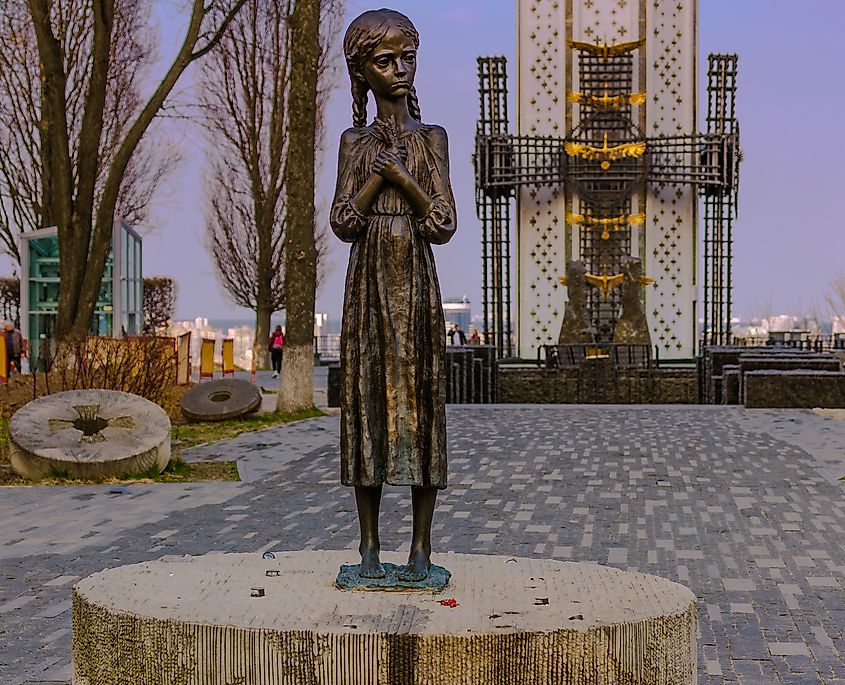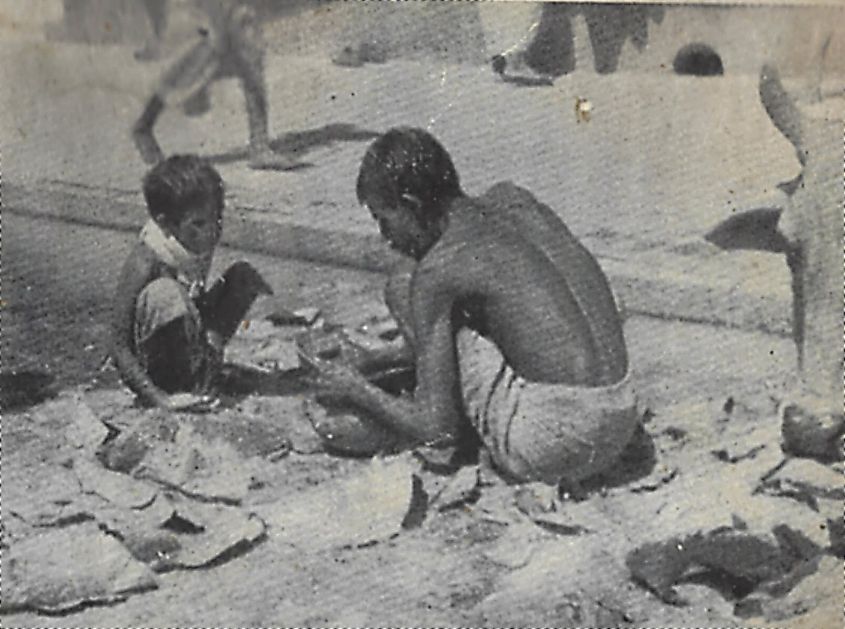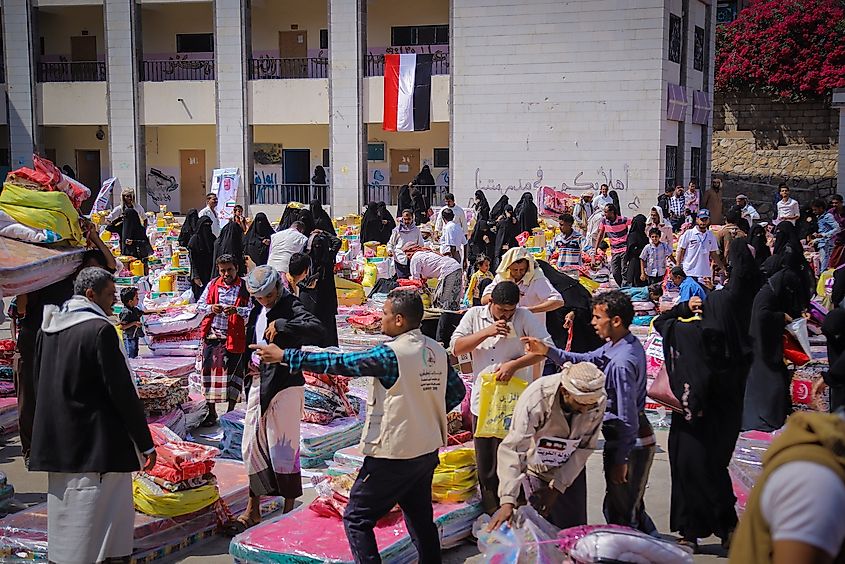Human-made Famines That Killed Millions

- Famines with natural causes are seen to be generally decreasing in modern times.
- Famines with human-made causes have and continue to imperil millions of lives across the world.
- Human-made famines oftentimes stem from political conflict and unease, such as a non-democratic government system, for example.
A bleak paradox exists in the world today when it comes to famines. While the modern industrial era has seen a reduction in the number of major famines stemming from natural causes due to an increase in the availability of and access to food (because of an increase in trade and, locally, greater agricultural yield), along with innovations in sanitation and healthcare — famines with wide-reaching consequences have generally become harsher, blighting both urban and rural populations. This is because famines are increasingly becoming an intentional, human-caused phenomenon.
Distinct from something like sustained malnutrition due to poverty, a famine is more episodic in nature. Famine is defined by Merriam-Webster as an extreme scarcity of food that, according to Our World in Data, occurs suddenly and leads to widespread deaths in a population.
Human-made famines oftentimes stem from political conflict and unease, such as a non-democratic government system, for example. We have also seen famines being weaponized during wartime, or as a direct byproduct of warfare, whose logistics limit access to food. What this means is that while we are seeing fewer famines, the ones that do occur are more sinister in cause and ultimately deadlier. Having an impact that reaches thousands and millions of people, modern-day, human-made famines tend to be more insidious than those earlier on in human civilization that occurred due to natural causes.
Here are five human-made famines that either killed millions of people or are projected to.
The Ukrainian Famine

The Ukrainian Famine, also known as Holomodor, lasted from 1932 to 1933 and killed about 3.9 million people, that is, 13% of the Ukraininan population at the time. This famine, now widely considered a genocide, struck with keen precision and intent. At the time, Ukraine was a part of the Soviet Union headed by Joseph Stalin, who, in efforts to streamline the nation’s transformation into a communist economy, called for privately-owned farms to be given up to the state, which would run them collectively. The farmers who resisted losing their land and livelihoods were considered enemies of the state and their farms were forcibly taken.
This collectivization was ultimately ineffective, and it became obvious by 1932 that Ukraine’s grain harvest would significantly miss the target that Soviet planners projected. When this shortfall did occur, Stalin decided to punish the citizens for it, ordering that the Ukrainian peasants’ entire harvests be confiscated. Made desperate and left without any sustenance, Ukrainian citizens resorted to the consumption of pets and other innutritious items like bark and leaves. Citizens did appeal to the state for assistance, but did not receive any helpful response or action. By the summer of 1933, two-thirds of farms' households had perished. Realizing that matters would only worsen, Stalin eased collection of crops in the autumn of 1933.
Bengal Famine Of 1943

The only famine in Indian history to be human-caused, the Bengal Famine of 1943 killed about 3 million people, and Winston Churchill’s policies, specifically their failure, are to blame. According to recent studies, Churchill's wartime cabinet in London was told that the country’s reliance on Indian resources for war could lead to famine in the South-Asian nation, but the cabinet did not heed the warning, continuing to export rice out of the country. Churchill’s exports led to wartime inflation in India and panic buying among Indian citizens, meaning that the poorer citizens ultimately could not access food. India put in urgent requests from 1942 to 1943 to London for one million tonnes of emergency wheat, but these requests were denied. Meanwhile, in the coastal regions of Bengal, Churchill ordered the confiscation of local food so as to feed the British army, and ordered the confiscation and destruction of fishing fleets so that, if the Japanese army invaded, they would not have resources. Churchill blamed the famine on India’s supposed increasing population.
The Great Chinese Famine
From the spring of 1959 to the end of 1961, about 30 million people died in China due to one of the largest famines in human history. While drought did emerge as a small factor in its exacerbation, the cause of the Great Chinese Famine is former Chairman of the People’s Republic of China, Mao Zedong. Chairman Mao, inspired by Stalin, mobilized the country’s population toward heavy industry, specifically steel production. Peasants who would have otherwise farmed their fields were ordered to undertake mining. Efforts were directed toward the search for iron ore, limestone, toward smelting metal, felling trees in search of charcoal, and in building clay furnaces. The materials the workers yielded were underwhelming. Food production, meanwhile, was assigned to agricultural communes, which ultimately worked less land and planted less grain — but this fact was misrepresented in official reports whose aim was to show the efficacy of the agricultural communes. By 1959, one-third of China’s provinces were experiencing famine.
South Sudan

In early 2017, the United Nations (UN) declared a human-caused famine in South Sudan due to a civil war. With economic instability and destruction of crops caused by the three-year war, 100,000 people faced direct starvation, and it was estimated that one million would soon face famine. Many farmers and their families, according to the UN, lost means of survival such as their livestock and farming tools. Meanwhile, those in the city faced sky-high prices, and more than 250,000 children faced death. The hunger crisis, the UN said, was the worst crisis in the civil war, which was sparked by a clash between the Sudan People’s Liberation Army (SPLA) that was loyal to President Salva Kiir and its rival force, SPLA in Opposition, which backed the First Vice-President Reik Machar. This conflict blocked any food assistance coming into the nation. The UN said 4.9 million people were in urgent need of food. While the famine was declared over by June 2017, 1.7 million still lived directly below the famine line, facing emergency levels of hunger.
Yemen

Declared a humanitarian crisis by UNICEF, the situation in Yemen escalated in 2015 when Saudi Arabia spearheaded a military offensive, backed by the United States of America, to suppress and defeat an armed and growing group of Shia rebels called Houthis, who control much of Yemen. Saudi Arabia believes that the Houthis are given support by Iran, Saudi Arabia’s chief rival. Blockades surrounding rebel-controlled areas enforced by Saudi Arabia mean that prices of food and imported items go up, while bombings are destroying the local economy by literally exploding infrastructure and businesses within the rebel-controlled areas. Many have lost their jobs and families their incomes, factors that, compounded with the high prices for food, are leading directly to a delicate situation. About 20 million people, that is, 70% of Yemen’s population, are experiencing malnutrition due to food insecurity and 10 million people are on the brink of famine due directly to the war. Matters in the country have been exacerbated by a recent cholera outbreak and COVID-19. Assistance coming into the country is being impacted due to the blockades.











